Ryan Hall's Blog, page 240
June 27, 2016
Photos: The Elites at the B.A.A. 10K
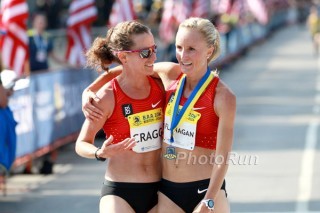
Headlined by Shalane Flanagan’s American 10K road record, the B.A.A. 10K in Boston took place in perfect conditions on Sunday and featured Flanagan and Amy Cragg racing in their Olympic build-up. Both runners snagged PRs in the distance.
RELATED: Shalane Flanagan Sets American Record at the B.A.A. 10K
Here are photos from the elite races, taken by PhotoRun.net:
Photo Gallery
1 of {count}
Back to Start
View Larger Image

View Larger Image

View Larger Image

Dathan Ritzenhein finished fourth in 28:12.
View Larger Image

The lead pack of the men's race early on.
View Larger Image

Shalane Flanagan was doing a tune-up race before the Olympics marathon in August.
View Larger Image

Amy Cragg is also tuning up for the Olympics. She ran a personal-best 31:31 to place third.
View Larger Image

Abdi Abdirahman finished eighth in 28:39.
View Larger Image

Flanagan took charge and set her sights on her own American record, which she set last year in 31:03.
View Larger Image

Daniel Chebii of Kenya broke away in the final turn to win the men's race in 27:55.
View Larger Image

Flanagan lowered her American record, crossing in 30:52 to win the race.
View Larger Image

Shalane Flanagan and Amy Cragg, who finished third, after the race.
View Larger Image

Flanagan ran even splits, completing each half in 15:26.
View Larger Image

Flanagan now has a 10K and a half-marathon PR during this Olympic build-up.
Related Galleries

Photos: 2016 Bryce Canyon 100

Photos: 2016 Alaska Airlines Rock ‘n’ Roll Seattle Marathon & 1/2 Marathon

Photos: 2016 Alaska Airlines Rock ‘n’ Roll Seattle
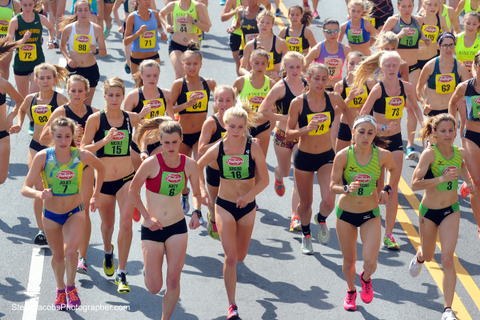
Photos: 2016 Freihofer’s Run for Women 5K

More Galleries
The post Photos: The Elites at the B.A.A. 10K appeared first on Competitor.com.
June 26, 2016
Shalane Flanagan Sets American Record at B.A.A. 10K
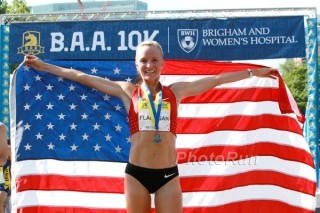
Photo: PhotoRun.net
(c) 2016 Race Results Weekly, all rights reserved. Used with permission.
BOSTON — On a picture-perfect summer day, Massachusetts native Shalane Flanagan cruised to a North American record at the sixth annual B.A.A. 10K, presented by Brigham and Women’s Hospital. Preparing for the Olympic Marathon in August, Flanagan motored to a time of 30:52, shattering both her own continental record of 31:03 and the event record of 31:04.
“There’s just nothing better than hearing the chants of ‘Go USA!'” said Flanagan, describing what it meant to set a national record in her home city. “There’s just nothing better than running at home before we go and represent our country in Rio.
“Doing it here, on my own streets, my town, my home, today is a day for sure I will remember for a really long time,” she continued. “I’ve had a lot of great highlights in my career, but today will be certainly one of them.”
Flanagan—who lives in Portland, Ore., but grew up in nearby Marblehead, Mass.—was poised to become the first American ever to win this race after she entered only a week ago. Training with Olympic teammate Amy Cragg, the pair took off from the start determined to finish on the podium.
Blasting through the mile in 4:53 and two miles in 9:51, Flanagan led a robust group of women that included Cragg, defending B.A.A. 10K champion Mary Wacera, and former Abbott World Marathon Majors champion Edna Kiplagat. Behind them, reigning Boston Marathon champion Atsede Baysa did her best to maintain contact.
Flanagan appeared to be a metronome on the streets of Back Bay. Hitting the turnaround near Boston University and passing the halfway mark in 15:26, the four-time Olympian dug deep and began to pull away from the field.
Using the large crowds and hometown cheers to her advantage, Flanagan pushed on and gained a step’s edge over the trailing Kiplagat at 8 kilometers (24:44). From there, the gap would widen as the picturesque Boston Public Garden and Boston Common came into view.
Making the final turn onto Charles Street, Flanagan had one thing on her mind: her North American record of 31:03, which she set last September in Tilburg, Netherlands. Powering through the finish with 30:52, she broke it by 11 seconds. Kiplagat maintained second in 31:06, followed by Cragg in third in 31:31; both women set career best times.
“You have to really seize these kind of moments,” said Flanagan, reflecting on the day’s performance. “Here I am at home, my dad’s out here, I have family around, and it just seemed like a really special way to do my last race right before Rio. It kind of gives me chills just thinking about it. From here, it’s just really meaningful.”
Interestingly, Flanagan even split the race to the dot. When told by coach Jerry Schumacher that she ran 15:26 on the front end and 15:26 on the back, Flanagan shook her head. “I was doubting myself at two miles,” she admitted. Flanagan and Cragg only took two easy days before the race, and will resume training at around 115 miles per week. Flanagan hit the Charles River for a post-race 45-minute run with father Steve, who biked alongside, and Cragg.
While Flanagan got asked most questions post-race, Cragg was over the moon with her new PB. She could barely contain herself when asked her thoughts.
“I am absolutely thrilled. For a shorter road race, that was the most competitive I’ve felt in an international field,” added Cragg. “I felt incredibly strong, and I train with the best girl that just broke the American record. That’s a big boost of confidence as well. I couldn’t be happier.”
Reigning B.A.A. 10K and B.A.A. Distance Medley champion Wacera wound up fourth in 32:03, while Baysa was a distant 14th in 33:59.
The men’s race was a battle all the way until the final turn, when Kenya’s Daniel Chebii took off from countrymen Philip Langat and Daniel Salel. A very large pack raced through the heart of downtown Boston, with American Olympian Dathan Ritzenhein mixing it up alongside reigning champion Salel, Chebii, Langat, and Kenyan Silas Kipruto.
After passing three miles in 13:39, the hammer would be thrown down with a 4:27 fourth mile. However, the pack remained tight with all five still in contention.
Leading into the race, Chebii said he wanted to make his move after halfway. Ultimately, the deciding move would come much later, as he was side-by-side with Langat through 8 kilometers in 22:25. Salel kept pace two seconds back, followed by Ritzenhein.
“My tactics were successful, because I was able to go with the guys until 5K, and after 5K we were running down a pace that was comfortable to me,” he said. “When I was in something like 8K, I knew totally that I was going to win. When I reached 9K, I started to push it.”
Wanting to make his first trip to the United States worthwhile, Chebii unleashed a furious sprint with 500 meters remaining. The decisive surge dropped Langat and Salel, and Chebii dashed down Charles Street steps in front.
Becoming the sixth consecutive Kenyan man to win the B.A.A. 10K, Chebii broke the finisher’s tape in 27:55, seven seconds ahead of Langat (28:02). Salel was third in 28:08, while American Ritzenhein was fourth in 28:12.
“I am happy to be champion. The race was very good, everything was very nice!” said Chebii. “My first time to the United States, and I get the victory today, become the champion of Boston.”
“I have to come back next year to defend my title again,” he said. “I like Boston.”
For Ritzenhein, the race was a nice chance to return to racing fast and competing on the roads.
“I was pretty happy to get out and race again, get excited again and push the pace,” said Ritzenhein, the top American finisher at the 2015 Boston Marathon. “I was so close to third, I just kept trying to catch the pace… Running 28:12, close to my road PR, I’m very happy with how my training’s been and how it went.”
Fellow American Abdi Abdirahman finished eighth in 28:39. Pleased, Abdirahman wondered what his time would equate to on the track; he bypassed a chance to attempt to make his fifth Olympic team on the track at 10,000m. Next up he’ll race at the AJC Peachtree Road Race on the Fourth of July.
Many athletes completed the B.A.A. 10K as part of the Brigham and Women’s Hospital team, raising money for their life.giving.breakthroughs program. On hand supporting them were Sue Rapple, Chief Development Officer of Brigham and Women’s Hospital, as well as Spike, a new unicorn mascot for the event.
B.A.A. Executive Director Tom Grilk said the sixth annual B.A.A. 10K, presented by Brigham and Women’s Hospital, was a grand success on all fronts. Between the postcard-like weather, record-setting times, memorable post-race ceremony, and an event-record number of finishers, Grilk was near speechless.
“Magnificent. Today was a day that one dreams about,” he said. “A wonderful day to run for everyone, and an emotional lift for everybody simply having our two Olympic marathoners here to run. To have them perform how they did, with Amy setting a personal best and Shalane running a personal best, course record and American record, made it a very, very inspiring day.
In total, 7,805 runners finished this year’s B.A.A. 10K, the largest in event history. The B.A.A. 10K, presented by Brigham and Women’s Hospital, is an IAAF Bronze Label road race.
The post Shalane Flanagan Sets American Record at B.A.A. 10K appeared first on Competitor.com.
June 24, 2016
Photos: Chasing Fast Times on the Track in Oregon
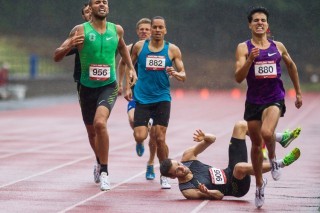
The Stumptown Twilight Track Meet on June 23 in Gresham, Ore., provided the opportunity for top-tier and up-and-coming American runners a last chance to qualify for the July 1-10 U.S. Olympic Trials. Despite a light rain, the racing was fierce and emotions ran high. Here’s an inside look at how the meet played out in all of its competitive glory.
Photo Gallery
1 of {count}
Back to Start
View Larger Image

Stumptown Twilight Track Meet
For some athletes (including those in the men's 5,000-meter run), it was a chance to qualify for the U.S. Olympic Trials for the first time or improve their Olympic Trials seeding times, while for others it was just a another chance to let it rip and stoke their competitive fires.

Stumptown Twilight Track Meet
In some cases, the big-name stars won their events, including Matthew Centrowitz running away from the field in the men's 1,500 in 3:37.81. Centrowitz was the only one to reach the Olympic Trials qualifying time, but he entered the meet having already achieved it.
View Larger Image

Stumptown Twilight Track Meet
But in some cases, the top dogs didn't win. Here Nike OTC runners Galen Rupp and Eric Jenkins chase Justyn Knight, an up-and-coming sophomore at Syracuse, in the men's 5,000.
View Larger Image

Stumptown Twilight Track Meet
Knight wound up being the surprise winner in the 5,000 in 13:26.36, outkicking Woody Kincaid (13:27.32) and Galen Rupp (13:27.34) for the victory. Knight set a new PR of 13:26.36 and solidified his spot in the Olympic Trials.
View Larger Image

Stumptown Twilight Track Meet
The emotion of winning the fast heat of the 800 shows on Chris Low's face, even though his time (1:47.14) was well off the Olympic Trials qualifying standard.
View Larger Image

Stumptown Twilight Track Meet
Megan Patrignelli takes the water pit on way to winning womens 3,000-meter steeplechase in 9:43.37, which put her under the Olympic Trials and Olympic qualifying standards.
View Larger Image

Stumptown Twilight Track Meet
The women's 3,000-meter steeplechase was one of the many events that took place amid a steady rain.
View Larger Image

Stumptown Twilight Track Meet
Erin Teschuk navigates the water pit on the way to a runner-up finish (9:48.65) in the women's steeplechase under the Olympic Trials qualifying standard.
View Larger Image

Stumptown Twilight Track Meet
Tabor Stevens won the men's steeplechase in 8:37.42.
View Larger Image

Stumptown Twilight Track Meet
Tabor Stevens won the men's steeplechase in 8:37.42, but not fast enough to break the Olympic Trials standard.
View Larger Image

Stumptown Twilight Track Meet
Coming down the hometretch of the second heat of the men's 800, Grant Grosvenor trips and starts to fall ...
View Larger Image

Stumptown Twilight Track Meet
and as Grosvenor takes a tumble, James Eichberger (far right) surges for the win in 1:48.48.
View Larger Image

Stumptown Twilight Track Meet
Tori Tsolis (left) won the second heat of the women's 1,500 in 4:16.82 amid a steady rainfall.
View Larger Image

Stumptown Twilight Track Meet
Under the glow of stadium lights on a wet and rainy night, Oregon Project teammates Eric Jenkins and Galen Rupp cool down together after their 5,000 meter race. They'll be among the favorites in that event in the U.S. Olympic Trials in early July.
View Larger Image

Stumptown Twilight Track Meet
Oiselle's Jess Barnard strains toward the finish line in the women's steeplechase.
View Larger Image

Stumptown Twilight Track Meet
Jenna Westaway of Brooks Canada broke away from the field down the homestretch of the women's 800.
View Larger Image

Stumptown Twilight Track Meet
Westaway won women's 800 in 2:01.97, a time faster than the U.S. Olympic Trials qualifying time.
View Larger Image

Stumptown Twilight Track Meet
Westaway's reaction says it all.
View Larger Image

Stumptown Twilight Track Meet
Madeline Summer of Calgary International TC feels the anguish of finishing of last in the second heat of the women's 1,500.

More Galleries
The post Photos: Chasing Fast Times on the Track in Oregon appeared first on Competitor.com.
A Day in the Life with Magdalena Boulet
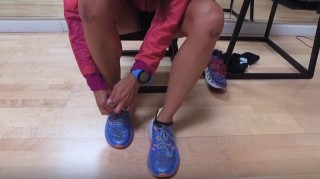
HOKA One One athlete Magdalena Boulet has been a world-class runner for more than a decade, but she’s so much more than that—as a typical day in her busy life shows. Family comes first—her husband, Rich, and her son, Owen, also lead busy lives—and the balance, support and integration they achieve are paramount to making it all work and the reason it’s all so worthwhile. Amid that synergy, Magdalena finds time to fit in her training and also working 9 to 5 as director of research and development for a sports nutrition company. It’s not a lifestyle everyone can pull off, but that multi-tasking commitment and relentless energy has been woven into the fabric of Magdalena’s life for a decade and certainly contributed to her making the 2008 U.S. Olympic team in the marathon and winning the 2015 Western States 100.
The post A Day in the Life with Magdalena Boulet appeared first on Competitor.com.
2016 Summer Trail Running Shoe Review
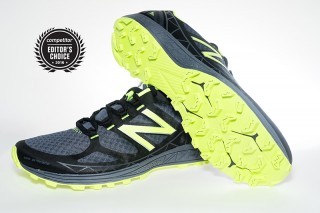
Summertime means it’s time to venture off-road and explore the great outdoors, no matter if that’s at a local trail near your neighborhood or an epic route inside a national park. Running on trails offers a bit of serenity you’re not likely to find within an urban or suburban environment. But while you’re winding through forests and taking in the views, you’ll want to make sure you’re properly shod. In this review, we highlight 11 of the best trail running shoes available at running stores this spring and summer in three categories: agile cruisers, mid-range hybrids and mountain marauders.
Note: Weights listed per shoe are for men’s size 9.0 and women’s size 7.0
The post 2016 Summer Trail Running Shoe Review appeared first on Competitor.com.
Do-It-Yourself Lactate Threshold Testing

One of the best measures of running fitness is lactate threshold (LT), which is the running speed or heart rate at which lactate—an intermediate product of aerobic metabolism in the muscles—begins to accumulate rapidly in the bloodstream. If your training program is working, two things are sure to happen. One is that you will run faster at the point where your blood lactate level spikes. The other is that your heart rate at this threshold will increase (i.e., your lactate threshold heart rate will move closer to your maximum heart rate).
In addition to being useful as a measure of running fitness, lactate threshold is also useful for establishing individual intensity zones for training. That’s because LT happens to fall at a moderate intensity level. Efforts that are more than a little faster than the pace or heart rate that corresponds to LT are defined as high intensity and offer a different set of benefits than moderate-intensity training. Efforts that are more than a little slower than the pace or heart rate that corresponds to LT count as low intensity and offer yet another set of benefits.
Establishing individual target intensity zones to use in your training requires that you know the running pace and/or heart rate that corresponds to your lactate threshold. Exercise scientists determine lactate threshold in a laboratory environment. In a typical LT test, a runner starts running at a low speed on a treadmill and is then required to run incrementally faster until the point of failure. At each step, the person leading the test takes a small blood sample from the runner’s fingertips and measures its blood lactate concentration.
After the test is completed, the collected data is used to create a graph in which the blood lactate concentration is plotted against pace and/or heart rate. Lactate threshold is pinpointed where the blood lactate concentration begins to increase rapidly. In a typical trained athlete, that point corresponds to roughly 85 percent of maximum heart rate and falls somewhere between 10K and half-marathon race pace.
The protocol just described has some obvious disadvantages. It requires special equipment and expert assistance, it’s relatively costly, and it’s invasive. For all of these reasons, it can’t easily be done with optimal frequency (once every six to eight weeks) by most runners. Fortunately, there are do-it-yourself alternatives to lab-based lactate threshold testing that work quite well. Let’s take a look at three of them.
The Time-Trial Method
The time-trial method of determining lactate threshold pace and heart rate can be done on a treadmill set at a 1 percent grade, on a running track, or on any other flat, smooth surface that’s conducive to fast running. It also requires some means of measuring time elapsed and distance covered as well as heart rate. Be sure to conduct this test on a day when you are not fatigued from recent hard training.
Begin with several minutes of easy jogging to warm up. When you’re ready, start tracking time, distance, and pace on your treadmill or watch and run for 30 minutes at the fastest pace you can sustain for that amount of time. Be careful to avoid the common mistake of starting too fast and then slowing down toward the end of the time trial due to fatigue, which will produce an inaccurate result. When you get to 10 minutes, note your heart rate.
At 30 minutes, stop and note your heart rate again. Calculate the sum of your heart rate at 10 minutes and your heart rate at 30 minutes and divide by two. That’s your LT heart rate. Your LT pace is your average pace for the entire 30-minute effort, assuming your pace was fairly steady.
A 2005 study by scientists at East Carolina University found that this method of determining LT heart rate and pace is very accurate. Its downside is that it’s hard—equivalent to running a half-hour race.
The Race Time Method
We know that a runner’s lactate threshold pace is a strong predictor of his or her race times. But it also works the other way around: Your race times can be used to estimate your pace at lactate threshold.
I often use coach Greg McMillan’s Running Calculator for this purpose. Simply enter a recent race time in the relevant field and press the “Submit” button. Near the top of the results page, you will see “vLT” with some numbers next to it. That is your approximate lactate threshold pace.
To determine your LT heat rate, warm up and then accelerate to your LT pace on a flat, smooth surface. Wait for your heart rate to plateau and note it. That number is your LT heat rate.
The High-Tech Method
A new option for do-it-yourself lactate threshold has emerged recently. It entails using LED lights to noninvasively read the concentration of lactate in the blood. The sensor is contained in a sleeve worn around the calf. A smartphone app guides the runner through a traditional LT test workout protocol (i.e., starting at a slow pace and accelerating every few minutes until exhaustion). When the workout is complete, the app uses the data collected from the sensor to calculate lactate threshold pace and heart rate as well as appropriate training zones.
A 2015 study published in the Journal of Strength and Conditioning Research reported that this new method exhibited a high degree of accuracy when compared against the laboratory method. In my own testing, I found that the LED light method closely matched the result that I got from the race time method.
What’s Your Lactate Threshold?
Do you know your lactate threshold pace and heart rate? You should. Fortunately, getting accurate measurements without expert help (or blood!) has never been easier. Choose your preferred DIY method and start tracking your fitness and training more effectively today.
RELATED: The Physiological Differences Between Male and Female Runners
The post Do-It-Yourself Lactate Threshold Testing appeared first on Competitor.com.
June 23, 2016
Q&A: Nick Symmonds on the Olympics, Doping and Parties
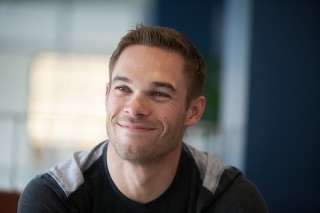
Photo: Courtesy of Brooks Running
Whether it’s about doping, the hypocrisy of amateurism in sports, Nike’s outsized influence, or human rights, six-time American 800-meter champion, two-time Olympian and serial entrepreneur Nick Symmonds never holds back. Ahead of the 32-year-old’s bid to make his third Olympics on July 4 at the U.S. Olympic Trials in Eugene, Ore., Symmonds shares his thoughts about the state of the sport, how elites party, and the difference between running and training.
What’s an Olympic year like for you in terms of your focus and state of mind?
It doesn’t change a lot for me as a competitor. It changes a lot as a businessman. Because people wake up and start caring about what I’m doing. Most of the world doesn’t really care what I do for three years, but during an Olympic year everyone wants an interview and sponsors want to be a part of what you’re doing. It’s an exciting year in that you get to work harder off the track.
If you could be czar of track and field, what would you do?
I would do everything possible to separate track and field from the Olympic movement. The Olympics are a great entity but they are so steeped in amateurism that we just can’t have a full-fledged professional sport as long as the Super Bowl for us is the Olympics every four years. I’m really impressed with what tennis did back in the ’70s and ’80s, the way the athletes came together and fought for their rights—and having a Grand Slam model, three to four events each year that paid millions of dollars and everybody in the world would stop and take note. I gotta be honest, nobody cares what happens at a Diamond League event. No one’s gonna remember these races in six months, let alone years from now. I’d even argue the IAAF World Championships is kind of a watered-down competition.
Why should joggers and casual runners care about track and field as a sport?
Right now I don’t think that they should care. The average person probably believes or has heard how filthy our sport is. These are things that make me not wanna follow the sport. And I’m in the sport!
What is it that makes an athlete like yourself suspect a fellow athlete of doping?
All I can speak to is the stuff that I’ve seen around me and though I haven’t witnessed an athlete injecting themselves, I’ve seen what’s happened with the Russians, what’s happened with the Ethiopians, Kenyans, Jamaicans. The lack of testing that takes place outside the United States is laughable to be honest.
Are there telltale signs that make you suspect a certain person, for example?
I’ll go on record of saying that I’m the kind of person that wants to give everyone the benefit of the doubt. I’m a short, stocky white kid that managed to run 1:45 clean. I’m by far not the quintessential body type for running fast 800s. So I look at David Rudisha, a 6-foot-3 Masai warrior Kenyan that was raised at altitude, yeah he should probably run two seconds faster than me over 800 meters. So it’s very easy for me to give him the benefit of the doubt and say ‘yeah of course he was clean.’ But again, I’m not necessarily pointing fingers or naming names, I’m just saying if you look at the math, there’s only one way it adds up, and it’s that some of the people we’re competing with are dirty.
You’re known for being able to get into top shape quickly. How do you do it?
I typically carry an extra 5 to 10 pounds on me most of the year. It’s very easy for me to lose that weight, but I get sick or I get injured if I try to run too light, too soon. So I was racing in China last week at 167, which is 7 pounds higher than I’d like to race at USAs. So over the next seven weeks I’ll shed a pound a week with the intention of racing at 160 at USAs. Coach Danny Mackey and I like to call it my weight vest. I carry my training vest around with me for 11 months out of the year and then I take my weight vest off right before USAs and sure enough that helps a lot believe it or not.
RELATED: Cross-Train Like Olympian Nick Symmonds
Through combination of diet and training? Or more one than the other?
More diet. I’m the kind of guy that’s always believed that if the furnace is hot enough it’ll burn anything—and I’m running 10 miles a day, so I’ll eat whatever I feel like eating. With just a tiny little bit of focus on my diet, maybe having one beer instead of two at night, maybe having popcorn instead of potato chips with my sandwich at lunch, little tiny tweaks like that I can just shed pounds without thinking about it almost.
What was it like starting a company while still training as an elite runner?
It was kind of a lifesaver in 2014 when I was injured and had a season-ending injury. It was really the first time I’d had to deal with season-ending injures since I turned pro, and I didn’t handle it well. The only way that I could deal with it mentally was the idea of turning lemons into lemonade. And coach Sam [Lapray] and I, we’re kind of serial entrepreneurs. We said let’s view this not as a forced break in my career, but just a bit of a sabbatical that would allow us to do what we’d always wanted to do, and that was start a consumer-goods business basically around the sport of running. I’d had the idea for Run Gum for close to a decade. I estimate I probably lost $100,000 in earnings that summer by not being able to race, but we have recouped that many times over in the creation and success of Run Gum. So it was kind of a blessing in disguise when you look at it that way.
How hard do elites party overall compared to the general populace?
I think they party equally as hard, just not as frequently. I have a lot of friends from college that were never athletes and lived normal lives and they partied a lot, maybe two to three times a week they’re going out. Elite athletes might only go out once a month but when they do they go out harder than anybody. And it’s because they need to blow off that steam.
Like a work-hard, play-hard sort of thing for elite athletes?
Exactly. I remember when I was 22 or 23 and fresh out of college and coach Gags [former Oregon Track Club coach Frank Gagliano] is telling me to make sure I’m in bed by 9:30. It would just anger me. I hated the lifestyle so much when I saw my friends traveling the world and partying, living this carefree lifestyle. Now I’m 32, when most of them are in jobs that they hate and mortgages and families, they would give anything to be in bed by 9:30 and I’m in bed, sleeping peacefully for 12 hours a night. There was kind of this switch in my late 20s/early 30s where the lifestyle went from something I thought was holding me back to something that was probably the best part of the whole job.
Do elite runners enjoy running more than everyone else, or do they sometimes dread going for a run just like the rest of us?
I know for a fact that a lot of elite runners dread going for a run. I love running. I love everything about it. But I always say I hate training. Running is waking up, putting your shoes on and just spending some time alone in nature or with some friends, connecting with the world around you, and it’s beautiful. Training is about doing whatever’s on the paper whether you feel like it or not. Training is sacrifice, it’s time away from family, it’s time away from friends. It’s a 24/7 job.
Is it easy to get focused for the Olympic Trials when you’re in Eugene? What’s it like for you?
It still feels like home. I lived there for eight years and I still have a house there and a business there, so I’m back to Eugene quite a bit. [Symmonds now lives in Seattle.] It’s easy, I just go back and kick my feet up. I would say the huge advantage is that I still have a good following there, and I wanna put on a show for that crowd. And I’m hoping, and I’ll need it this year certainly more than ever, that when I step on that starting line on July 4 and the Eugene crowd goes crazy, that feeling of meaning and that feeling of ‘hey, I really want this’ will allow my legs to get it done one more time and put me on that third Olympic team.
VIDEO: Why I Run: Nick Symmonds
The post Q&A: Nick Symmonds on the Olympics, Doping and Parties appeared first on Competitor.com.
Gear We Love: June 2016
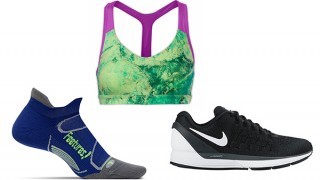
What are we into as the summer months get started? Check out our gear picks from all the editors:
Photo Gallery
1 of {count}
Back to Start
View Larger Image

Janji Men's Haiti Printed Middle Man Shorts
I have a drawer full of black running shorts. A few solid blue pair too, both navy and electric blue. Some of them fit and perform great, but there's nothing really inspiring about any of them. But one of my favorite shorts is this colorful pair from Janji. This small Boston-based brand was started a few years ago with a two-fold purpose: to create top-tier performance-oriented running apparel that fits, feels and looks amazing, but also to play a role in initiating social change. The brand's tag line is "Run for another" and that's truly what it is all about. Every single piece of clothing Janji produces is inspired by cultural influences of a foreign land and includes an earmarked percentage of sales to a specific cause. Most of Janji's culturally inspired apparel helps provide clean water in places where it's not readily available. For example, the purchase of one pair of these shorts helps provide clean water to one Haitian resident for a full year. Other cultural styles include influences from Kenya, Indian, Ethiopia, Rwanda, Tanzania, Guatemala and the U.S. (Janji proceeds help fund clean drinking water of the Navajo population in New Mexico.) — Brian Metzler, editor-in-chief ($42, runjanji.com)
View Larger Image
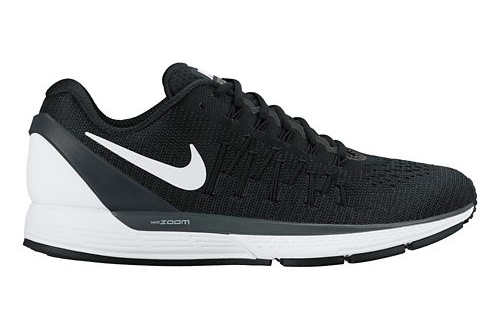
Nike Zoom Odyssey 2
When it comes to shoe updates, newer isn’t always nicer. But the Odyssey 2 feels to me like a much better version of an already decent shoe. The new Odyssey retains the same medial support wedge as before, although to me this shoe feels much more nimble and lively. It’s a support shoe that doesn’t feel like typical support shoes do: heavy, clunky and stiff as a suit of armor. It’s also narrower than the very wide first version. Tl;dr: It’s a fun shoe for long runs. They’re officially available July 4. — Adam Elder, managing editor ($150, nike.com)
View Larger Image
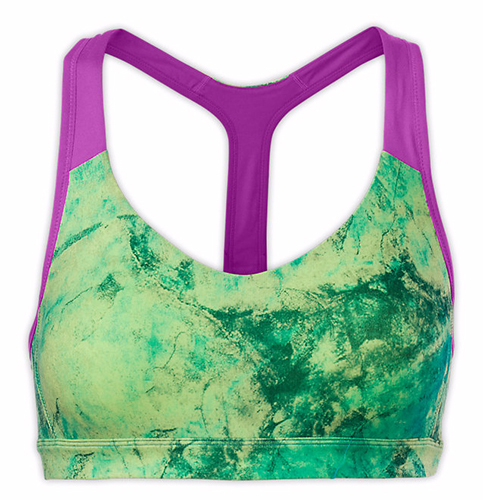
The North Face MA-X Bra
I'm a big fan of this sports bra's simplicity. Its design makes it easy to put on and take off and the T-back cut of the straps prevents it from digging into the shoulders (and hides nicely underneath a tank top). The fabric is soft with subtle molded cups for some support, just enough for high-impact activity without feeling squashed by compression or overstuffed with padding. It also has a mesh back to maintain breathability. —Emily Polachek, associate editor ($40, thenorthface.com)
View Larger Image

Feetures Elite Lite Cushion No-Show Tab
Made of 96 percent nylon and 4 percent spandex, this sock gives you a really secure fit and is comfy enough to go long distances without any problems with sweat or blisters. I wear several different brands of socks and I like them all. But I find myself grabbing these off the pile more often than not when I have a workout I want to nail. — Ryan Wood, web editor ($14.99, feeturesrunning.com)
Related Galleries
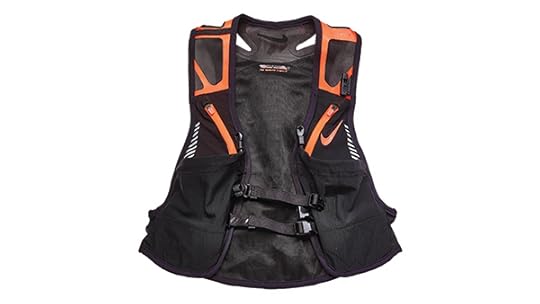
Gear We Love: May 2016

Gear We Love: April 2016

Gear We Love: March 2016

Gear We Love: February 2016

More Galleries
The post Gear We Love: June 2016 appeared first on Competitor.com.
Dathan Ritzenhein Won’t Compete at U.S. Olympic Track Trials
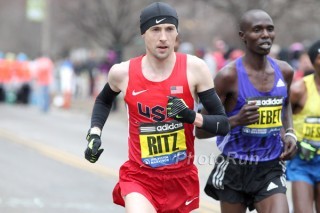
Dathan Ritzenhein has been an American distance-running fixture at the Olympic Games, competing in the 10,000m in 2004 and 2012, and in the marathon in 2008.
However, he won’t be in Rio this summer for the 2016 Olympics. Ritzenhein dropped out of the U.S. Olympic Trials marathon in February with leg cramps, and he informed MLive.com that he won’t be in Eugene, Oregon next week for the Olympic Trials for track. He had considered competing in the 10,000m.
Ritzenhein told MLive that he had some nagging injuries this spring and was unable to find a 10,000m qualifying race to coincide with his health and fitness. With that, he will sit out this Olympic cycle.
“I’ve just tried to move past it,” Ritzenhein told MLive. “One of the things for a while was the battle with myself with wanting to do it with closing the book knowing I wasn’t in condition to do it. I’ve come to terms with that now. I just want to move to the next thing.”
Ritzenhein placed 9th in the 2008 Olympic Marathon in Beijing, the highest among American finishers in the race. He also earned a bronze medal at the 2009 World Half Marathon Championships.
The next thing for Ritzenhein is actually this weekend. He will be part of the elite field at the B.A.A. 10K on Sunday, his first race since the Trials marathon. Ritzenhein will be joined by several high-profile Americans, including Shalane Flanagan, Amy Cragg and Abdi Abdirahman.
They will be competing against a strong international field that includes Geoffrey Mutai, Mary Wacera and Atsede Baysa.
Ritzenhein, 33, was adament that his Olympic quest isn’t over—it’s just taking a break in 2016.
Just on pause for 2016! @Tokyo2020. @runmeb is my inspiration for that! https://t.co/vm3BepbwjF
— Dathan Ritzenhein (@djritzenhein) June 22, 2016
MORE: MLive.com
The post Dathan Ritzenhein Won’t Compete at U.S. Olympic Track Trials appeared first on Competitor.com.
June 22, 2016
Out There: Doublespeak
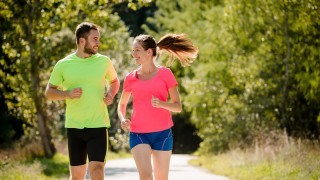
What runners say and what runners mean are two different things.
Runners are the biggest liars around. It’s not that we intend to lie, mind you – but what comes out of our mouths usually doesn’t reflect the truth. Sometimes it’s because of good intentions, sometimes delusion – but most of the time, it’s because runners just live in an alternate reality. What we say versus what we actually mean are two different things.
What runners say: “I’m going to do my run at 4 A.M.”
What runners mean: “My snooze button is about to get quite the workout.”
What runners say: “It’s not a very long run.”
What runners mean: “We may cross state lines.”
What runners say: “Let’s take it easy today.”
What runners mean: “Runners, take your mark…get set…”
What runners say: “Hold on, my shoe is untied.”
What runners mean: “I gotta catch my breath, dude.”
What runners say: “Good running shoes are an investment, you know?”
What runners mean: “Please don’t tell my spouse how much money I spent on this pair.”
What runners say: “I have a healthy appetite.”
What runners mean: “This is my third breakfast today.”
What runners say: “I’m just going to do a quick run.”
What runners mean: “See you in two hours.”
What runners say: “I think I’ll wear leggings to work today.”
What runners mean: “There is chafing in unspeakable places.”
What runners say: “Eew, look at that gross thing over there!”
What runners mean: “Please look away while I blow a snot rocket.”
What runners say: “It’s a technical trail.”
What runners mean: “You have health insurance, right?”
What runners say: “I read somewhere that active recovery is better than rest, actually.”
What runners mean: “I will run with this injury until it goes away and/or requires amputation.”
What runners say: “Oh, I’m just doing this race as a training day.”
What runners mean: “I haven’t run in four weeks.”
What runners say: “I’m going to do a quick warm-up jog over there.”
What runners mean: “Be right back, gonna take a leak in the bushes.”
What runners say: “It’s a rolling course.”
What runners mean: “We’re doing hill repeats up a ski jump.”
What runners say: “Those were some monster hills!”
What runners mean: “I had a bad race and need something to blame.”
What runners say: “I started my taper yesterday.”
What runners mean: “Don’t talk. Just leave the pizza and walk away.”
What runners say: “I’m carb-loading.”
What runners mean: “I had three donuts for an afternoon snack.”
What runners say: “I am never doing that again.”
What runners mean: “Ask me again in two days.”
* * *
About The Author:
Susan Lacke does 5Ks, Ironman Triathlons and everything in between to justify her love for cupcakes (yes, she eats that many). Susan lives and trains in Salt Lake City, Utah with three animals: A labrador, a cattle dog, and a freakishly tall triathlete husband. She claims to be of sound mind, though this has yet to be substantiated by a medical expert. Follow her on Twitter: @SusanLacke
The post Out There: Doublespeak appeared first on Competitor.com.
Ryan Hall's Blog
- Ryan Hall's profile
- 21 followers



